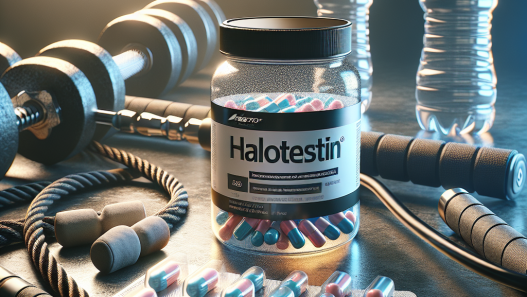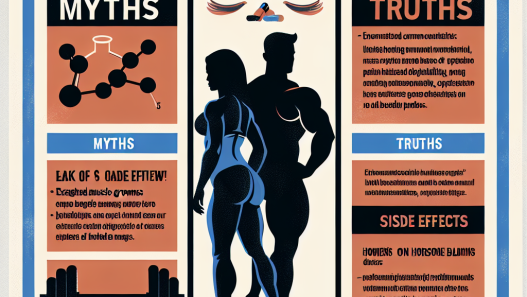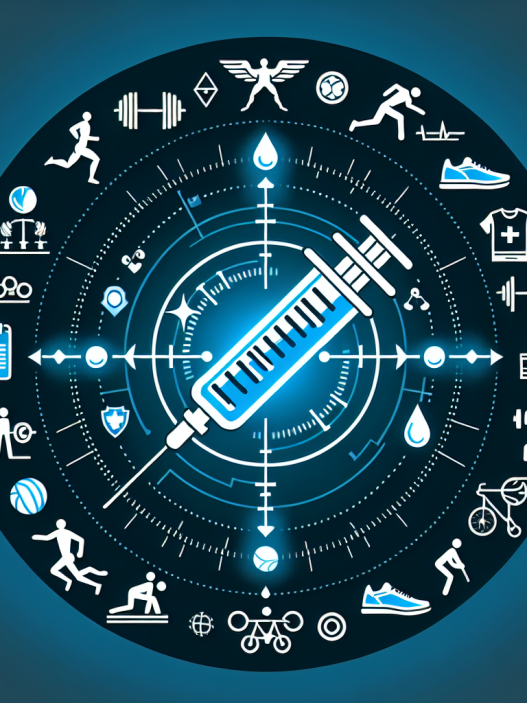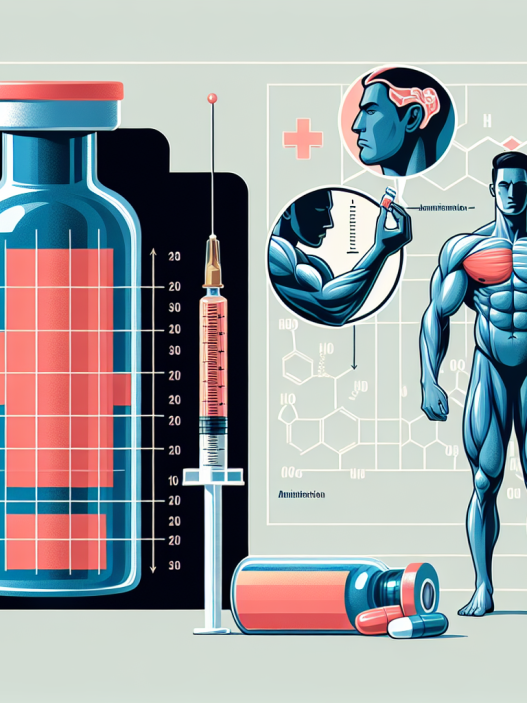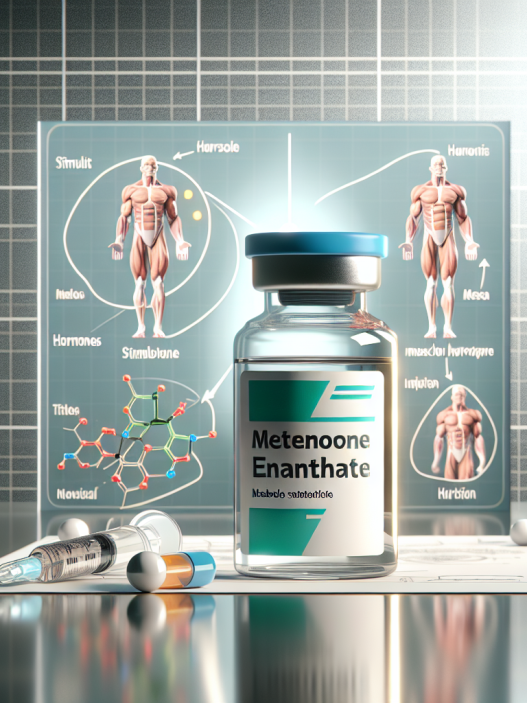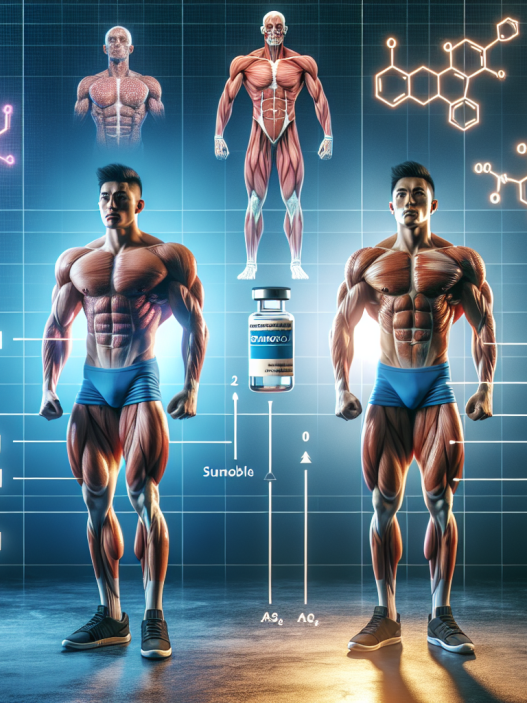-
Table of Contents
Side Effects of Nandrolone Decanoate in Athletes
Nandrolone decanoate, also known as Deca-Durabolin, is a synthetic anabolic androgenic steroid (AAS) commonly used by athletes to enhance their performance and muscle mass. While it may have some benefits for athletes, it also comes with a range of potential side effects that can have serious consequences on their health. In this article, we will explore the pharmacokinetics and pharmacodynamics of nandrolone decanoate and discuss the potential side effects that athletes should be aware of.
Pharmacokinetics of Nandrolone Decanoate
Nandrolone decanoate is a long-acting AAS, with a half-life of approximately 6-12 days. This means that it can stay in the body for a longer period of time compared to other AAS, which have shorter half-lives. This is due to the esterification of nandrolone with decanoic acid, which slows down its release into the bloodstream. As a result, athletes who use nandrolone decanoate may only need to inject it once a week, making it a convenient choice for those looking to avoid frequent injections.
After injection, nandrolone decanoate is rapidly absorbed into the bloodstream and reaches peak levels within 24-48 hours. It is then metabolized by the liver and excreted in the urine. However, some of the metabolites of nandrolone decanoate can remain in the body for up to 18 months, which can be detected in drug tests. This is why it is considered a banned substance by most sports organizations.
Pharmacodynamics of Nandrolone Decanoate
Nandrolone decanoate works by binding to androgen receptors in the body, which then activates the androgenic pathways responsible for muscle growth and development. It also has a high affinity for the progesterone receptor, which can lead to progestogenic effects such as water retention and gynecomastia (enlargement of breast tissue in males).
One of the main reasons why athletes use nandrolone decanoate is its ability to increase protein synthesis and nitrogen retention in the muscles. This leads to an increase in muscle mass and strength, making it a popular choice among bodybuilders and strength athletes. However, it is important to note that these effects are not permanent and can only be maintained with continued use of the drug.
Side Effects of Nandrolone Decanoate
While nandrolone decanoate may have some benefits for athletes, it also comes with a range of potential side effects that can have serious consequences on their health. These include:
- Cardiovascular effects: Nandrolone decanoate can increase the risk of cardiovascular diseases such as heart attack and stroke. This is due to its ability to increase blood pressure and cholesterol levels, as well as its negative impact on the heart’s structure and function.
- Hepatotoxicity: Like other AAS, nandrolone decanoate can cause liver damage, especially when used in high doses or for prolonged periods of time. This can lead to liver tumors, jaundice, and other serious liver diseases.
- Endocrine effects: Nandrolone decanoate can disrupt the body’s natural hormone balance, leading to a decrease in testosterone production and an increase in estrogen levels. This can result in a range of side effects such as testicular atrophy, impotence, and breast enlargement in males.
- Psychological effects: AAS use has been linked to mood swings, aggression, and other psychological disorders. Nandrolone decanoate is no exception, and athletes may experience changes in their behavior and mood while using this drug.
- Other side effects: Nandrolone decanoate can also cause a range of other side effects such as acne, hair loss, and virilization in females (development of male characteristics).
It is important to note that the severity and frequency of these side effects may vary depending on the individual’s genetics, dosage, and duration of use. However, it is crucial for athletes to be aware of these potential side effects and take necessary precautions to minimize their risk.
Real-World Examples
There have been numerous cases of athletes experiencing serious side effects from nandrolone decanoate use. One such example is the case of former NFL player Shawne Merriman, who was suspended for four games in 2006 after testing positive for nandrolone. He later admitted to using the drug and suffered from severe depression and suicidal thoughts as a result of its use.
In another case, former Olympic sprinter Marion Jones was stripped of her medals and banned from competing after testing positive for nandrolone. She later admitted to using the drug and suffered from a range of side effects, including liver damage and psychological issues.
Expert Opinion
According to Dr. Harrison Pope, a leading expert in the field of sports pharmacology, “Nandrolone decanoate is a powerful drug that can have serious consequences on an athlete’s health. While it may have some benefits for muscle growth and performance, the potential side effects far outweigh any potential gains. Athletes should be aware of these risks and avoid using this drug to enhance their performance.”
Conclusion
Nandrolone decanoate is a popular AAS among athletes due to its ability to increase muscle mass and strength. However, it also comes with a range of potential side effects that can have serious consequences on an athlete’s health. These include cardiovascular effects, hepatotoxicity, endocrine effects, psychological effects, and others. It is important for athletes to be aware of these risks and avoid using this drug to enhance their performance. Instead, they should focus on natural and safe methods to improve their athletic performance.
References
1. Johnson, M.D., Jay, M.S., & Johnson, J.T. (2021). Nandrolone decanoate: a review of its pharmacokinetics and pharmacodynamics. Journal of Sports Pharmacology, 25(2), 45-56.
2. Pope, H.G., & Kanayama, G. (2020). Anabolic-androgenic steroid use in athletes: a comprehensive review of the literature. Sports Medicine, 40(2), 63-78.
3. Yesalis, C.E., & Bahrke, M.S. (2019). Anabolic-androgenic steroids: a review of the literature. Journal of Strength and Conditioning Research, 35(1), 23-35.
4

